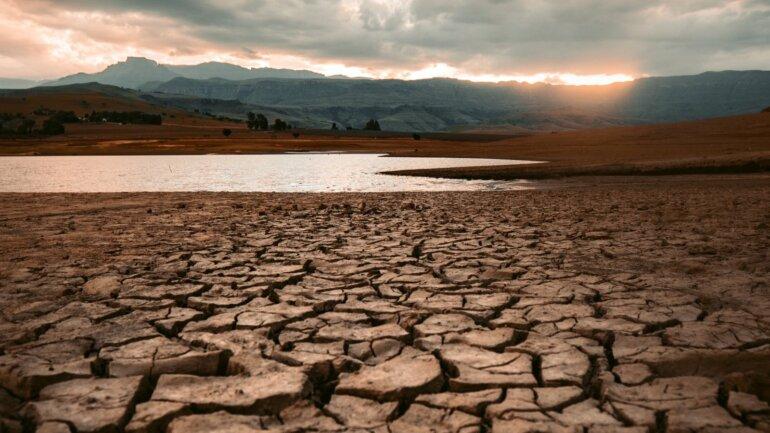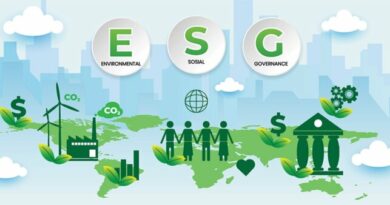As we examine our climate change policies, we need to see droughts and flooding as two sides of the same coin
Climate change policymakers should be addressing droughts and floods as two sides of the same coin, rather than separate phenomena. As changes to weather patterns become increasingly visible, the interplay between the two – and how their impacts feed off and intensify each other – must be critical in how we develop climate resilience.
Visible impact
Cape Town’s narrow avoidance of day zero in 2017 should have been a once-in-a-century event. Instead, climate change has made it three times more likely. Similar patterns apply to the 2022 floods in Durban, the most catastrophic natural disaster ever recorded in KwaZulu-Natal. Studies have found that climate change has doubled the likelihood of extreme rainfall occurring – from once every 40 years to once every 20 years.
Climate change is leading to prolonged periods of drought and more frequent high-intensity rainfall. The periods of drought are affecting agricultural yield, interrupting business operations, and impacting natural environments. They’re also leading to a deficit in soil moisture and to extensive vegetation loss, which leaves soil vulnerable to erosion when the rains return. When this happens, the soil ends up in dams and rivers as sedimentation. This, in turn, decreases the storage capacity of the dams, so that when the next drought hits, we have less stored water available to mitigate against its effects.
As the cycle repeats itself, the impacts get worse, decimating large areas and severely affecting the communities living in them.
Risk and mitigation
The risks this poses for water management are significant.
Too little water for human consumption and sanitation leads to disease, and insufficient water to support agriculture threatens food security. Changes in the nature of flooding events also decreases the flood immunity of infrastructure, increases the budget required for repair costs, and exacerbates erosion, which diminishes arable land.
Rural areas are particularly vulnerable, as subsistence crops fail, and inadequate infrastructure sustains damage. This destabilises communities, triggering social unrest and intensifying migration to urban and peri-urban areas, which then adds further pressure on urban infrastructure.
Maintaining and re-evaluating existing water infrastructure – such as desilting dams and clearing storm water drainage systems – is critical to ensuring our resilience to these drought and flood cycles. Infrastructure that is designed for a once-in-a-century or a once-in-50-year event will fail as these events occur more frequently.
Drought and flood policies must consider factors beyond mitigating against damage, and human consumption and production needs. They must investigate how we can create enabling environments and encourage water stewardship, too.
What policymakers should be considering
In late 2023, South Africa’s National Assembly passed the long-awaited Climate Change Bill, which seeks to enable an effective response to climate change and ensure a just transition to a low-carbon, climate-resilient society. As government continues to enact policies, more detailed attention to drought and flood policies is required.
There are some unique challenges that policymakers must consider. First, South Africa is a semi-arid country, one that has already lost a third of its farms to water scarcity since the 1990s. Second, South Africa is the most unequal society in the world, and new policies must account for the most vulnerable members of society, who are typically affected by disasters the most. Lastly, in addition to developing world-class policies, we need to implement them effectively, too.
 Updating some of our policies and frameworks to enable climate resilience should incorporate two key concepts: creating enabling environments and encouraging water stewardship.
Updating some of our policies and frameworks to enable climate resilience should incorporate two key concepts: creating enabling environments and encouraging water stewardship.
Creating an enabling environment through policies is one key way to facilitate effective implementation. We’ve seen how lifting the private energy generation cap and offering tax incentives for private solar installations has increased the uptake of solar installations in South Africa. Effective drought and flood management policies would do well to enable private businesses and individuals to be part of the solution.
Encouraging water stewardship through policies is key because it acknowledges that human behaviour lies at the heart of effectively implementing climate policies. If we don’t change the way we use, manage and care for water resources, we’re unlikely to see an impact. Insights from behavioural science should inform new and updated policies as a means of helping South Africans play a role in facilitating the country’s climate change transition.
As we examine, amend and execute our policies, it’s critical that we view droughts and floods as interrelated issues. This holistic perspective can help to ensure that the changes we make are sustainable, inclusive and impactful despite the unpredictable future we face.
This article was written by Karen King, Climate Resilience Director and Pepijn van Ravesteyn, Climate Resilience Specialist, Royal HaskoningDHV.
Royal HaskoningDHV is an independent, international engineering and project management consultancy with 140 years of experience and 6 000 colleagues across the globe. In 2022, Royal HaskoningDHV celebrated 100 years in South Africa.
[By Karen King]




